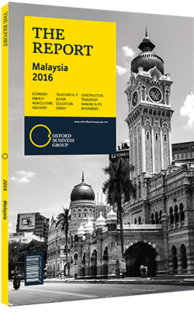Mohd Yusoff Sulaiman, President and CEO, Malaysian Industry-Government Group for High Technology: Interview

Interview: Mohd Yusoff Sulaiman
How is Malaysia expanding collaboration with other nations to bolster its capacity for innovation, science and technology?
MOHD YUSOFF SULAIMAN: When we look at collaborating with other organisations around the world, we strongly consider the culture and openness of the partner to share and work with us. We have partnered very successfully with the UK, France, South Korea and Japan, but in the future we need to consider how we should work with less-developed countries. Assisting such countries in capacity building will also make it easier for Malaysian business to expand and grow. Korea and Japan implemented the same strategy with us – exporting lower- and middle-tier activity whilst getting a return on their earlier investment.
To take the shipbuilding industry as an example, we won’t become one of the top three shipbuilding nations in the next five years, but we could become top three within a niche segment. South Korea now has many retired technologists whose skills can be cheaply exported to Malaysia. It is possible to find Malaysian businesses with one to three semi-retired foreign experts working in the organisation in an advisory role. Our businesses are at the stage where they have to review their own strategies of product development to meet the original equipment manufacturer requirements, and invest more in design and systems integration (SI) capability.
What are the key measures being taken under the new Aerospace Industry Blueprint 2030 to position Malaysia as ASEAN’s leading aerospace hub?
SULAIMAN: About one or two years ago the Performance Management and Delivery Unit evaluated the success of the first aerospace blueprint and found that 85% of the recommendations contained therein were implemented. We achieved a 5% share of the global maintenance, repair and overhaul market and now have a thriving manufacturing industry. But avionics has not really taken off and that’s what the second aerospace blueprint will focus on. We thought our strength in the electronics industry would spur development of avionics, but currently most involvement in this segment is by multinationals. So we are now moving towards development for local capacity building via business acquisition, attracting overseas businesses to work with local partners. Another focus area is SI, as it’s difficult to maintain and upgrade our defence asset acquisitions without it. We are approaching this issue by setting up a dedicated national body called Composites Technology Research Malaysia SI, charged with overseeing national development of the capability. As we continue, other sectors, such as rail and green technology, will also all need SI capability.
With government expected to invest RM160bn ($44.6bn) in rail development, what opportunities will there be for industry players?
SULAIMAN: We are striving for localisation of 30% based on initial targets, but by 2020 we would like to increase this to 50-70%. Our approach is similar to the aerospace sector in that we’re not intending to build complete trains, but rather integral parts and components, such as the composite body, as Malaysia is one of the leading producers of composites in the region. Our experience in advanced composites within the aerospace sector is applicable to rail, shipping and other industries.
Under the Eleventh Malaysia Plan we are now building the National Composites Centre (NCC) in collaboration with the NCC in Bristol, UK, through the Newton-Ungku Omar Fund arrangement. The centre will promote the use of automation and robotics in the manufacturing sector and will support development of the composites industry in the aerospace sector. We hope the NCC will be able to catalyse transformation from manual production to automation.
You have reached the limit of premium articles you can view for free.
Choose from the options below to purchase print or digital editions of our Reports. You can also purchase a website subscription giving you unlimited access to all of our Reports online for 12 months.
If you have already purchased this Report or have a website subscription, please login to continue.

